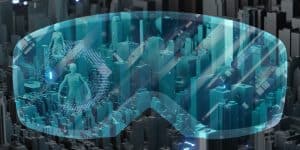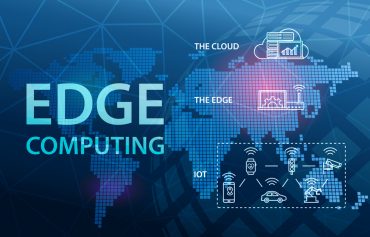
As businesses look to metaverse technology to bring enhanced personalization to the customer experience, data center solutions will need to extend out into an edge environment to meet the demands of the technology.
While the metaverse once sounded like fiction, it is now very much a reality, with some of the biggest companies in the world investing to bring this technology to the market. Leaders are considering how to use the metaverse to enhance training, increase collaboration across global teams, and bring more personability to customer experience and digital sales.
Metaverse use cases appear today as more of a social novelty but will rapidly evolve towards genuine improvements in worker experience as we navigate changes brought forth by the pandemic. However, as metaverse technology gains traction, the infrastructure that powers it will be put under pressure. More data center professionals will soon be asked to accommodate this shift, requiring power and data processing capabilities that many businesses are not yet prepared for. Fortunately, there are several ways that those responsible for facilities and critical infrastructure can lay the groundwork for the next few years.
See also: Don’t Overlook the Power of the Customer Experience
What is the metaverse?
The metaverse concept has taken root in several different industries, but a commonly accepted understanding of the metaverse is that of a “centralized virtual world, a ‘place’ parallel to the physical world.” The metaverse leans on existing technologies such as virtual reality (VR) and augmented reality (AR) to bring a third dimension to the internet, adding motion and the physical body. While the technology is still in its early stages – and will mostly be used for gaming and entertainment over the next few years — we’re moving in the direction of a ‘live internet.’ The Facebook name change has increased the general awareness of what the live internet might be, one in which friends in different countries can use virtual avatars to meet at a simulated café or where thousands of people can log on to experience a VR concert in real time. With this bump in popularity, businesses in all industries across the globe will be looking for ways to capitalize on this growing trend.
See also: Luxury Brands Embrace AR: Businesses Should Take Note
How to prepare
Once business leaders have worked out how they will incorporate metaverse technology into their organizations, the entire data center infrastructure – from real estate, to power distribution and cooling, to 24/7 monitoring services – will need to adapt to the metaverse. There will be increased demand for power and power density that cannot be met with current technology, which in turn will require new thinking about energy supply, distribution, resiliency, and maintenance. While this may sound daunting, digital transformation, aided by edge computing, will help enable these changes. Edge computing serves as a faster, more effective alternative to cloud computing solutions. In fact, data center solutions that are being built in the cloud will need to extend out into an edge environment to meet the demand from metaverse technology.
A 2020 Gartner report projected a 75% increase in edge computing by 2025. On top of this, the CEO and Founder of Dell Technologies expects that three-quarters of all data will be processed at the edge by 2025, versus only 10% being processed at the edge currently. The metaverse will only amplify this transition, meaning that data center leaders must adapt their current offerings to meet future needs.
Download Now: Building Real-time Location Applications on Massive DatasetsFour tips for data centers nearing the metaverse future
While the metaverse future will put a strain on data center infrastructure in the coming years, there are several ways that companies can better equip their data centers to handle extra pressure on top of adopting edge computing.
- Standardization: Data center leaders must standardize the technology within their facilities to ensure a replicable, highly resilient solution that is capable of adapting to an ongoing set of demands. Hyper-converged network infrastructure will need to be housed in a micro data center comprised of uninterruptible power supply (UPS), power distribution units (PDU), cooling, and both physical threat and cyber threat monitoring, engineered and then standardized as much as possible.
- Partnerships: By relying on partnerships, data centers will be better prepared for higher power and data processing needs. Having faith in an ecosystem of partners allows data center leaders to join forces on the latest technologies.
- Monitoring, management, and maintenance: Data center managers will need to leverage a new set of diverse human resources and digital tools to improve their power and data processing abilities. Data center infrastructure monitoring (DCIM) is at the heart of the solution and now has capabilities for cloud-based as-a-service models that allow the IT professional and IT service providers to work together with manufacturers on the best ongoing management experience.
- Modular UPS systems: These systems allow data centers to expand and house more data than ever without acquiring a larger footprint. These solutions also offer additional benefits of improved employee safety and easy scalability.
Data centers and the metaverse
While collaborating between IT and facilities has always been a critical theme for data center operations in the cloud and at the edge, now more than ever, business imperatives will require full alignment throughout different business functions. Therefore, relying on a diverse set of human skills and technologies can help facilities prepare. The metaverse will find a place in almost every industry as the concept becomes more concrete and generates highly useful technology. This change will provide a new way to show young professionals that the data center industry offers a variety of appealing careers, which will only draw more talent to this emerging sector.
In short, there are many ways data center leaders can act now to prepare their infrastructure for the metaverse. The balance between cloud and edge computing will not be one-size-fits-all. Both approaches will almost always exist in a hybrid model, and therefore preparation for both to co-exist must be part of every data center professional’s playbook.





























